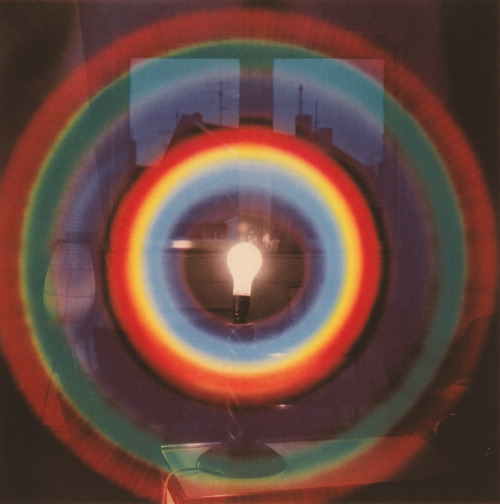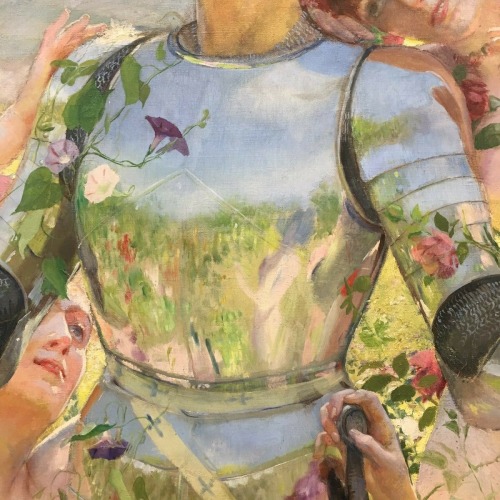George Costanza: Thinks Holistic Is The Way To Go.

George Costanza: Thinks Holistic is the way to go.
More Posts from Bullwinkel and Others

Olafur Eliasson, Untitled, 1996










Land of The Giants Project for Iceland
This design transforms mundane electrical pylons into statues on the Icelandic landscape.Choi + Shine,is the US architecture practice behind the proposal
Making only minor alterations to well established steel-framed tower design, we have created a series of towers that are powerful, solemn and variable. These iconic pylon-figures will become monuments in the landscape. Seeing the pylon-figures will become an unforgettable experience, elevating the towers to something more than merely a functional design of necessity.
The pylon-figures can be configured to respond to their environment with appropriate gestures. As the carried electrical lines ascend a hill, the pylon-figures change posture, imitating a climbing person. Over long spans, the pylon-figure stretches to gain increased height, crouches for increased strength or strains under the weight of the wires.
The pylon-figures can also be arranged to create a sense of place through deliberate expression. Subtle alterations in the hands and head combined with repositioning of the main body parts in the x, y and z-axis, allow for a rich variety of expressions. The pylon-figures can be placed in pairs, walking in the same direction or opposite directions, glancing at each other as they pass by or kneeling respectively, head bowed at a town.
Like the statues of Easter Island, it is envisioned that these one hundred and fifty foot tall, modern caryatids will take on a quiet authority, belonging to their landscape yet serving the people, silently transporting electricity across all terrain, day and night, sunshine or snow.


Anticipation
Tanja Jeremić, ello, behance, redbubble


Georges Rochegrosse (1859–1938), Le Chevalier aux Fleurs (The Knight of the Flowers) (detail) (1894), oil on canvas, 235.5 x 374 cm, Musée d'Orsay, Paris. Wikimedia Commons.

The Responsive Eye, 1966
Brian De Palma

Buffalo ‘66 (1998) dir. Vincent Gallo

Max Ernst. Paysage Noir. 1923.
-
 puke-ur-gutz liked this · 6 months ago
puke-ur-gutz liked this · 6 months ago -
 tevineleven11 liked this · 1 year ago
tevineleven11 liked this · 1 year ago -
 heated-drama-between-men liked this · 3 years ago
heated-drama-between-men liked this · 3 years ago -
 freackthejester reblogged this · 3 years ago
freackthejester reblogged this · 3 years ago -
 midnightcowboy1969 liked this · 4 years ago
midnightcowboy1969 liked this · 4 years ago -
 wiolettestrange reblogged this · 4 years ago
wiolettestrange reblogged this · 4 years ago -
 bullwinkel reblogged this · 4 years ago
bullwinkel reblogged this · 4 years ago -
 bullwinkel reblogged this · 4 years ago
bullwinkel reblogged this · 4 years ago -
 bullwinkel reblogged this · 4 years ago
bullwinkel reblogged this · 4 years ago -
 bullwinkel reblogged this · 4 years ago
bullwinkel reblogged this · 4 years ago -
 bullwinkel reblogged this · 4 years ago
bullwinkel reblogged this · 4 years ago -
 bullwinkel reblogged this · 4 years ago
bullwinkel reblogged this · 4 years ago -
 bullwinkel reblogged this · 4 years ago
bullwinkel reblogged this · 4 years ago -
 bullwinkel liked this · 4 years ago
bullwinkel liked this · 4 years ago -
 hamster-on-fire liked this · 4 years ago
hamster-on-fire liked this · 4 years ago -
 gayfrasier liked this · 4 years ago
gayfrasier liked this · 4 years ago -
 lovelyamneris reblogged this · 4 years ago
lovelyamneris reblogged this · 4 years ago -
 lovelyamneris liked this · 4 years ago
lovelyamneris liked this · 4 years ago -
 potok18 reblogged this · 4 years ago
potok18 reblogged this · 4 years ago -
 potok18 liked this · 4 years ago
potok18 liked this · 4 years ago -
 radicaaalll reblogged this · 4 years ago
radicaaalll reblogged this · 4 years ago -
 jungrl liked this · 4 years ago
jungrl liked this · 4 years ago -
 x--bearinmind liked this · 5 years ago
x--bearinmind liked this · 5 years ago -
 j-r-macready liked this · 5 years ago
j-r-macready liked this · 5 years ago -
 plagueofmice liked this · 6 years ago
plagueofmice liked this · 6 years ago -
 mrdchwlgry liked this · 6 years ago
mrdchwlgry liked this · 6 years ago -
 salamanderr reblogged this · 7 years ago
salamanderr reblogged this · 7 years ago -
 salamanderr liked this · 7 years ago
salamanderr liked this · 7 years ago -
 scientist-xerosic reblogged this · 9 years ago
scientist-xerosic reblogged this · 9 years ago -
 lufis1979 reblogged this · 9 years ago
lufis1979 reblogged this · 9 years ago -
 lufis1979 liked this · 9 years ago
lufis1979 liked this · 9 years ago -
 aqu4-rius-blog liked this · 9 years ago
aqu4-rius-blog liked this · 9 years ago -
 goth-garland reblogged this · 9 years ago
goth-garland reblogged this · 9 years ago -
 markmorones-blog liked this · 10 years ago
markmorones-blog liked this · 10 years ago -
 thisniggaheree reblogged this · 10 years ago
thisniggaheree reblogged this · 10 years ago -
 gnar666 reblogged this · 10 years ago
gnar666 reblogged this · 10 years ago -
 smoothjazz1997 liked this · 10 years ago
smoothjazz1997 liked this · 10 years ago -
 lucyanime liked this · 10 years ago
lucyanime liked this · 10 years ago -
 thezombygirl liked this · 10 years ago
thezombygirl liked this · 10 years ago -
 torridgristle reblogged this · 11 years ago
torridgristle reblogged this · 11 years ago -
 kickassery liked this · 11 years ago
kickassery liked this · 11 years ago -
 enicoleh liked this · 11 years ago
enicoleh liked this · 11 years ago -
 getticketsforthedance liked this · 11 years ago
getticketsforthedance liked this · 11 years ago -
 theearlofmelancholy reblogged this · 11 years ago
theearlofmelancholy reblogged this · 11 years ago -
 frippphone liked this · 11 years ago
frippphone liked this · 11 years ago

